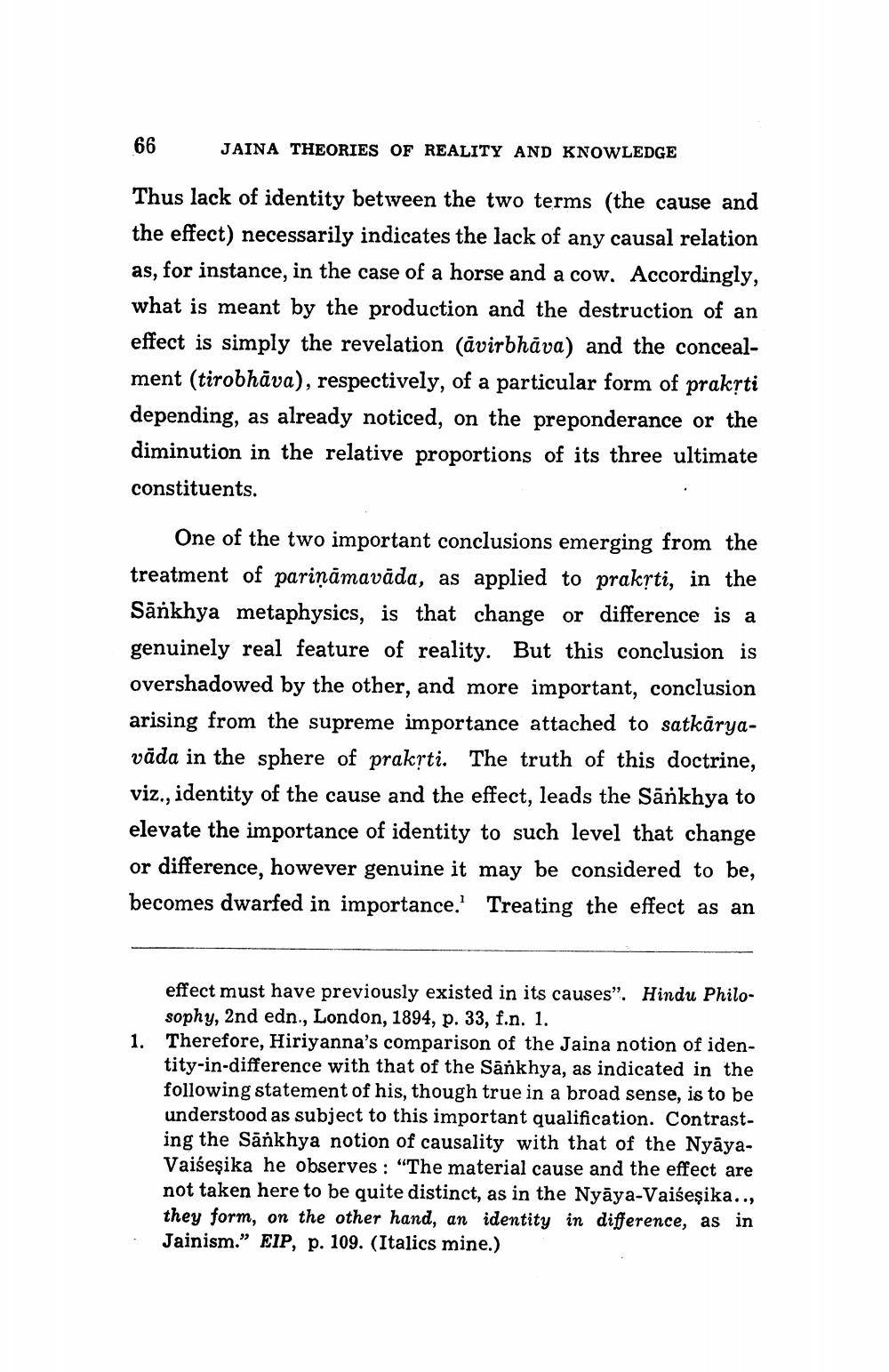________________
66
JAINA THEORIES OF REALITY AND KNOWLEDGE
Thus lack of identity between the two terms (the cause and the effect) necessarily indicates the lack of any causal relation as, for instance, in the case of a horse and a cow. Accordingly, what is meant by the production and the destruction of an effect is simply the revelation (ävirbhāva) and the concealment (tirobhāva), respectively, of a particular form of prakệti depending, as already noticed, on the preponderance or the diminution in the relative proportions of its three ultimate constituents.
One of the two important conclusions emerging from the treatment of pariņāmavāda, as applied to prakrti, in the Sānkhya metaphysics, is that change or difference is a genuinely real feature of reality. But this conclusion is overshadowed by the other, and more important, conclusion arising from the supreme importance attached to satkāryavāda in the sphere of prakrti. The truth of this doctrine, viz., identity of the cause and the effect, leads the Sänkhya to elevate the importance of identity to such level that change or difference, however genuine it may be considered to be, becomes dwarfed in importance. Treating the effect as an
effect must have previously existed in its causes". Hindu Philosophy, 2nd edn., London, 1894, p. 33, f.n. 1. Therefore, Hiriyanna's comparison of the Jaina notion of identity-in-difference with that of the Sankhya, as indicated in the following statement of his, though true in a broad sense, is to be understood as subject to this important qualification. Contrasting the Sankhya notion of causality with that of the NyāyaVaišeşika he observes : "The material cause and the effect are not taken here to be quite distinct, as in the Nyāya-Vaišeşika.., they form, on the other hand, an identity in difference, as in Jainism." EIP, p. 109. (Italics mine.)




